Wednesday☕️

Economics & Markets:
- Yesterday’s U.S. stock market:

- Yesterday’s commodity market:

- Yesterday’s crypto market:

Geopolitics & Markets:
- On April 28, 2025, Russian forces executed a large-scale assault on Kharkiv, Ukraine’s second-largest city, deploying a swarm of at least 15 Geran-2 kamikaze drones. The Iranian-designed, Russian-manufactured drones targeted residential and industrial areas, with multiple units striking the same locations, triggering widespread fires and significant damage. This attack reflects an intensifying Russian strategy to overwhelm Ukrainian air defenses and disrupt civilian infrastructure, leveraging the Geran-2’s low-cost, high-impact design to sustain pressure on urban centers.
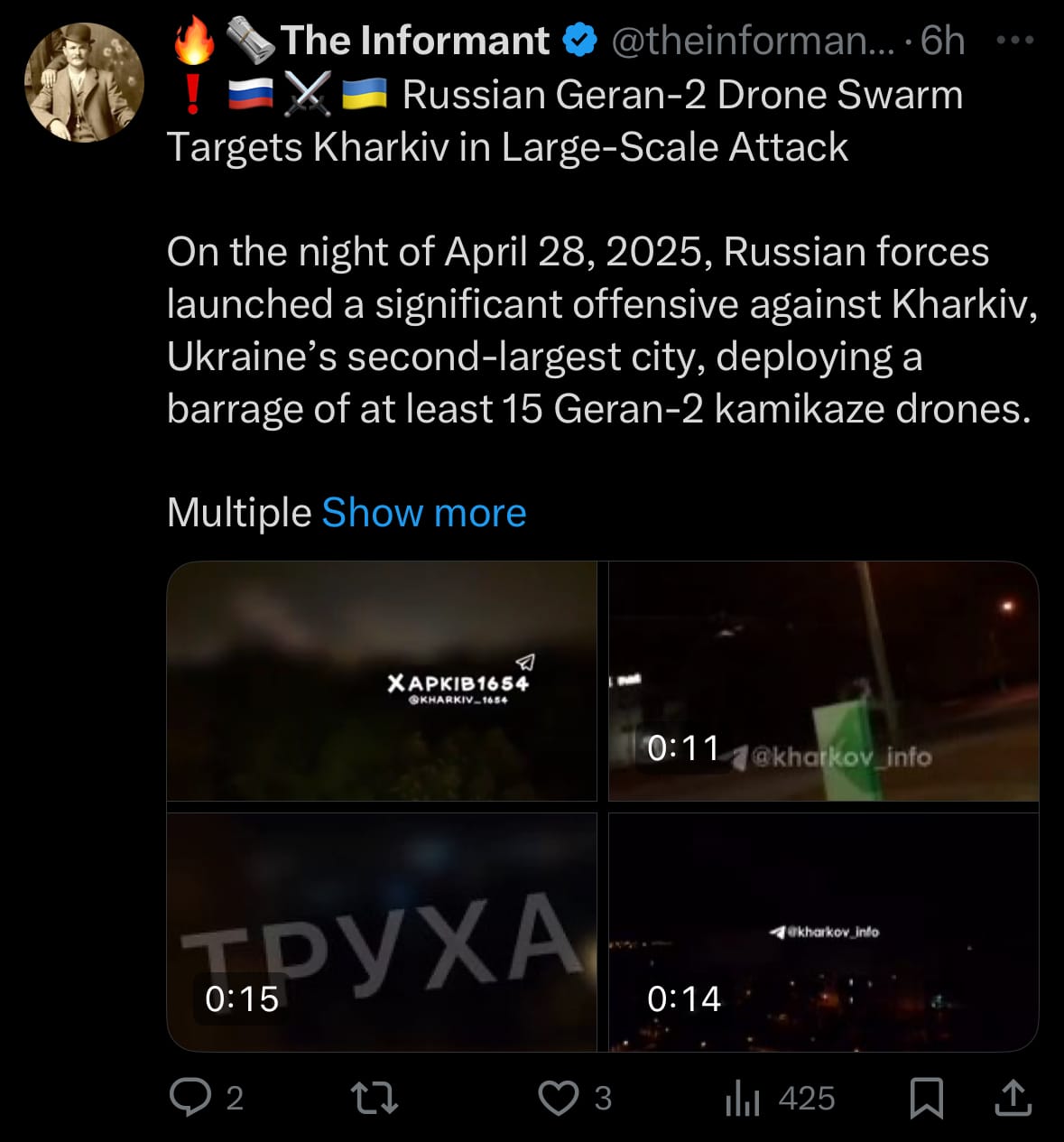
- The escalation underscores Russia’s growing drone warfare capabilities, with production of Geran-2 drones reportedly approaching 2,000 units per month. Footage captured by a Kharkiv resident revealed the drones’ coordinated approach, striking targets in rapid succession.
Environment & Weather:
- Yesterday, April 29, 2025, Texas faced widespread severe thunderstorms, primarily affecting West and Northwest Texas, driven by an upper-level weather disturbance and a stalled cold front. The storms brought large hail up to 5 inches in diameter, wind gusts reaching 106 mph, and heavy rainfall, triggering flash flood warnings due to 3-5 inches of expected rain, with isolated areas along the Red River potentially seeing 5-6 inches. Damage was reported in places like Benjamin, where strong winds and hail impacted structures and infrastructure, though tornado risks remained minimal.
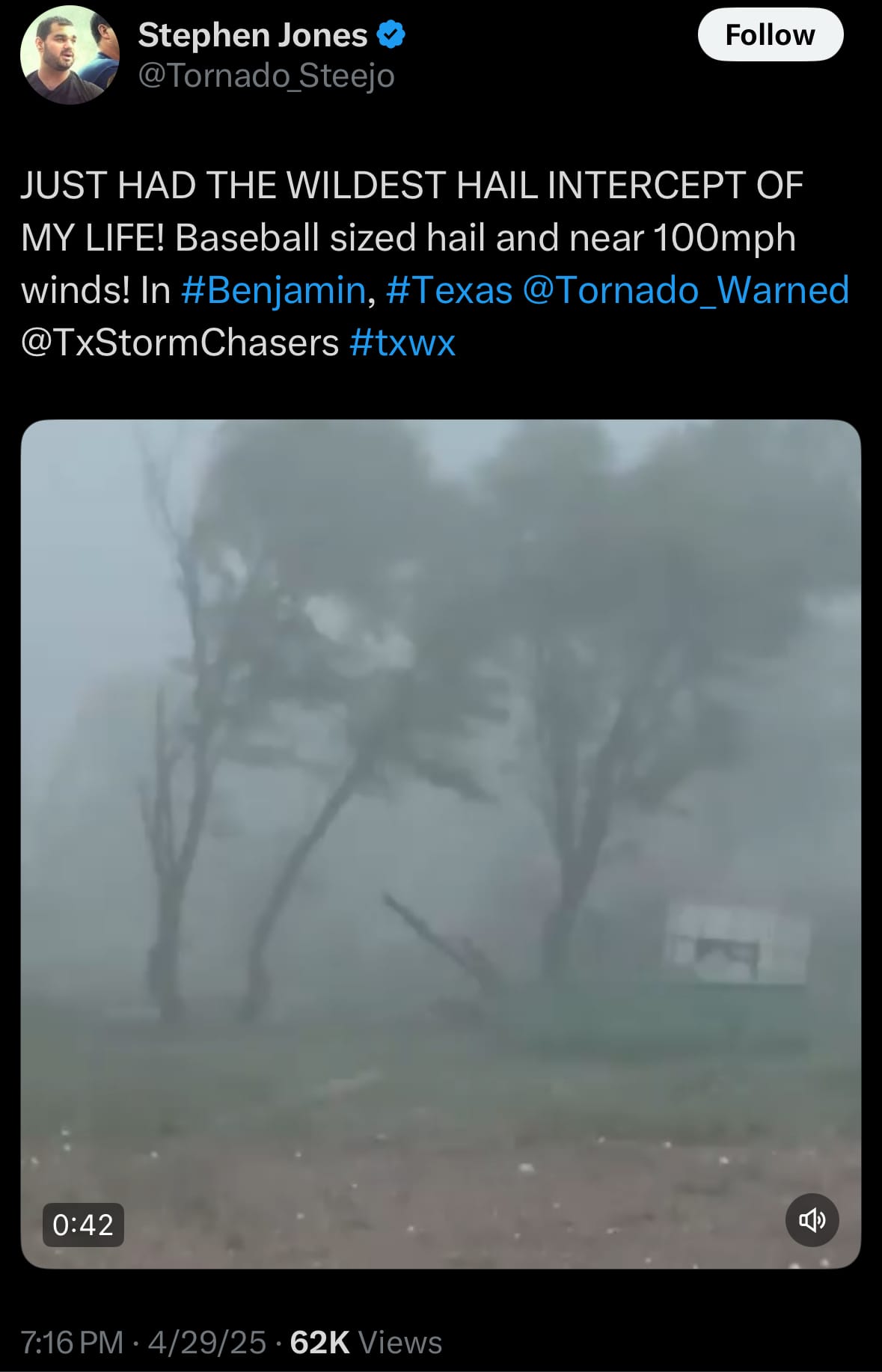
- The National Weather Service issued severe thunderstorm warnings and flood watches, noting the heightened flood risk due to already saturated soils. The storms, moving northeast at 20-30 mph, affected regions including the Permian Basin and Big Country, with hail sizes ranging from quarter to baseball-sized. The Storm Prediction Center classified parts of Texas under an Enhanced Risk for severe weather, with storms expected to persist overnight. These conditions reflect the typical spring weather volatility in the Southern Plains, posing challenges for local communities and emergency services.

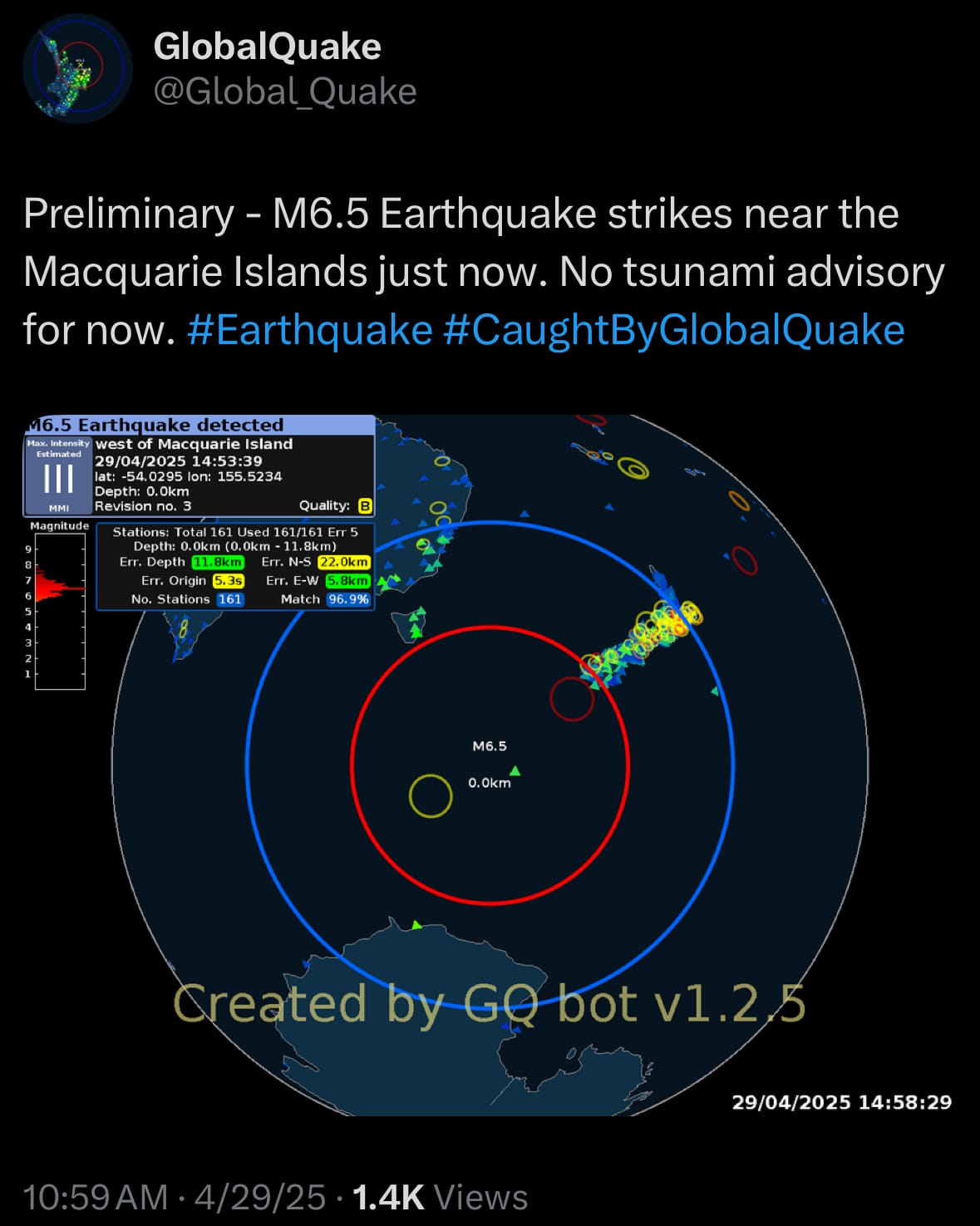
Space:
- Yesterday, April 29, 2025, the European Space Agency (ESA) launched the Biomass satellite, chosen in May 2013 as the seventh Earth Explorer mission in its Earth Observation Programme. Using P-band radar, the satellite aims to measure the amount of biomass and carbon stored in global forests, particularly in tropical regions, to improve understanding of their role in the carbon cycle and climate change. The data will support the UN’s REDD+ initiative to reduce carbon emissions from deforestation. Additionally, Biomass will map terrain elevation under dense vegetation to study subsurface geology and track glacier and ice-sheet movements, aiding research on ice-sheet mass loss.

- Yesterday, April 29, 2025, the LM400 Demo launch by Firefly for Lockheed Martin failed due to a malfunction during stage separation and second stage ignition, which caused the first stage to disintegrate and the second stage’s Lightning engine nozzle extension to detach, severely reducing thrust. The second stage reached 320 km altitude but failed to achieve orbital velocity, ultimately crashing into the Pacific Ocean north of Antarctica. The mission was meant to be the first of up to 25 Low Earth Orbit technology demonstration satellites, testing the customizable LM400 satellite bus designed for missions such as communications, remote sensing, imagery, and radar, with this launch carrying a communications payload.
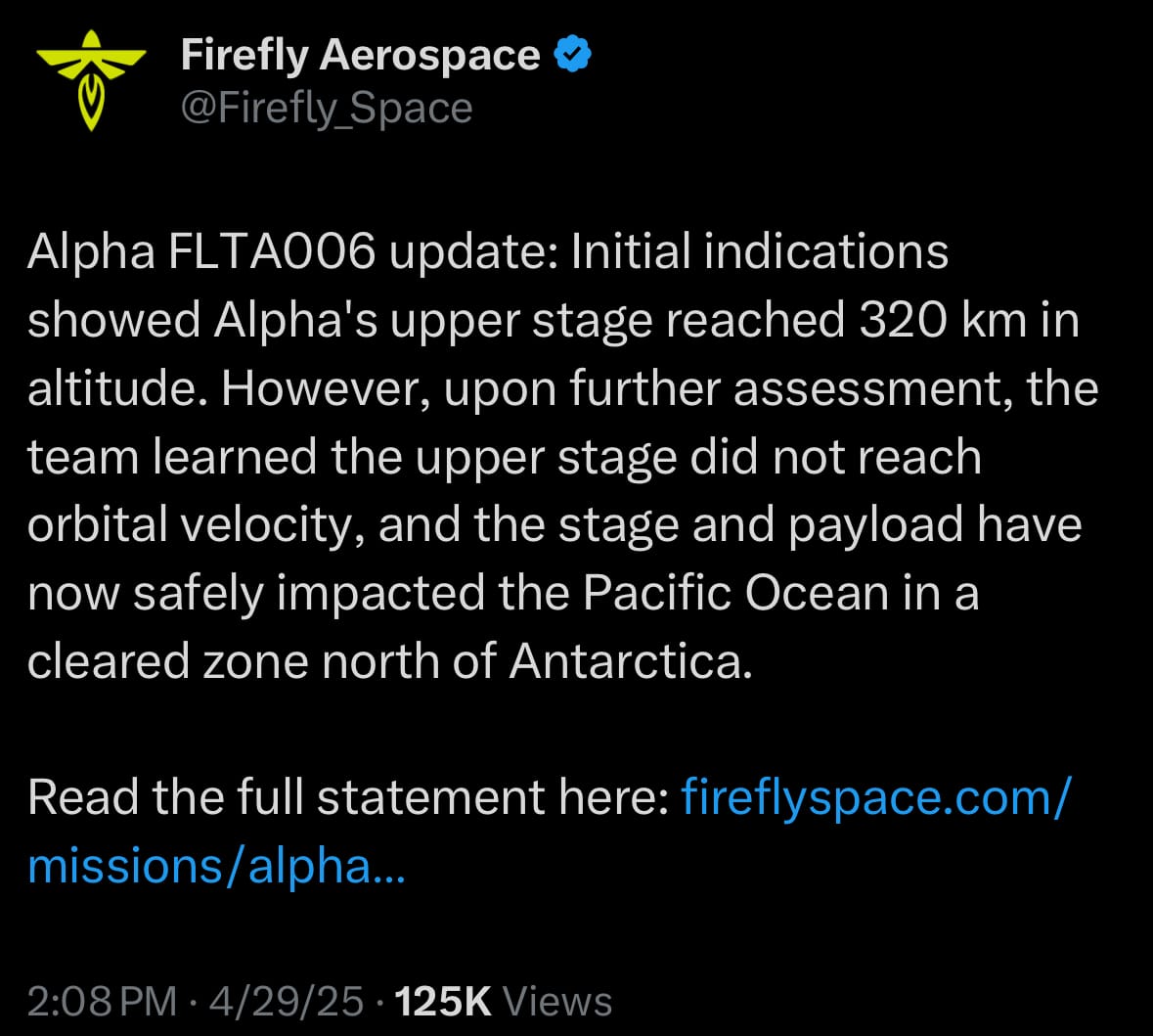
Statistic:
- Largest public automakers by market capitalization:
- 🇺🇸 Tesla: $940.61B
- 🇯🇵 Toyota: $254.64B
- 🇨🇳 Xiaomi: $158.54B
- 🇨🇳 BYD: $146.50B
- 🇮🇹 Ferrari: $82.46B
- 🇩🇪 Mercedes-Benz: $59.00B
- 🇩🇪 Volkswagen: $55.87B
- 🇩🇪 BMW: $53.81B
- 🇩🇪 Porsche: $46.46B
- 🇺🇸 General Motors: $45.35B
- 🇯🇵 Honda: $44.62B
- 🇮🇳 Maruti Suzuki India: $43.70B
- 🇮🇳 Mahindra & Mahindra: $41.25B
- 🇺🇸 Ford: $39.84B
- 🇰🇷 Hyundai: $33.16B
- 🇨🇳 Seres Group: $29.23B
- 🇮🇳 Tata Motors: $28.86B
- 🇳🇱 Stellantis: $27.62B
- 🇨🇳 SAIC Motor: $25.75B
- 🇰🇷 Kia: $24.86B
- 🇨🇳 Li Auto: $24.15B
- 🇯🇵 Suzuki Motor: $22.87B
- 🇨🇳 Great Wall Motors: $22.84B
- 🇨🇳 Geely: $21.27B
- 🇨🇳 XPeng: $18.88B
History:
- The history of drone warfare traces back to the early 20th century, with initial developments in unmanned aerial vehicles (UAVs) for military use. During World War I, experiments like the U.S. Kettering Bug, a gyro-stabilized aerial torpedo, laid groundwork, though it saw no combat. By World War II, radio-controlled drones like the British Queen Bee were used as target practice tools. The Cold War accelerated advancements, with the U.S. deploying the Ryan Firebee in the 1960s during the Vietnam War for reconnaissance, equipped with cameras to capture imagery over hostile areas. Israel’s success in the 1982 Lebanon War, using Scout and Mastiff UAVs for real-time battlefield surveillance and decoy operations, showcased drones’ tactical value. The 1990s saw the U.S. introduce the RQ-1 Predator, initially for reconnaissance with high-resolution cameras and live video feeds, which by 2001 was fitted with Hellfire missiles, enabling remote precision strikes.
- Advancements in the 21st century expanded drone capabilities significantly. The U.S. MQ-9 Reaper, introduced in 2007, offered greater endurance (up to 24 hours), higher payloads, and multi-role functions, including surveillance, targeting, and strike missions, with advanced sensors like synthetic aperture radar. Smaller tactical drones, like the RQ-11 Raven, provided ground troops with portable, short-range reconnaissance. By the 2010s, miniaturization and cost reductions allowed widespread proliferation, with countries like China developing the Wing Loong series and Turkey fielding the Bayraktar TB2, which proved effective in conflicts like Nagorno-Karabakh (2020) for artillery spotting and precision strikes. Recent innovations include AI-driven navigation and swarming, enabling coordinated attacks, as seen in Ukraine and Russia’s use of drones for reconnaissance and kamikaze missions. Modern UAVs range from nano-drones for close-quarters scouting to high-altitude, long-endurance platforms with satellite-linked controls, transforming warfare across strategic and tactical levels.
Image of the day:

Thanks for reading!
Earth is complicated, we make it simple.
Click image to view the Earth Intelligence System:
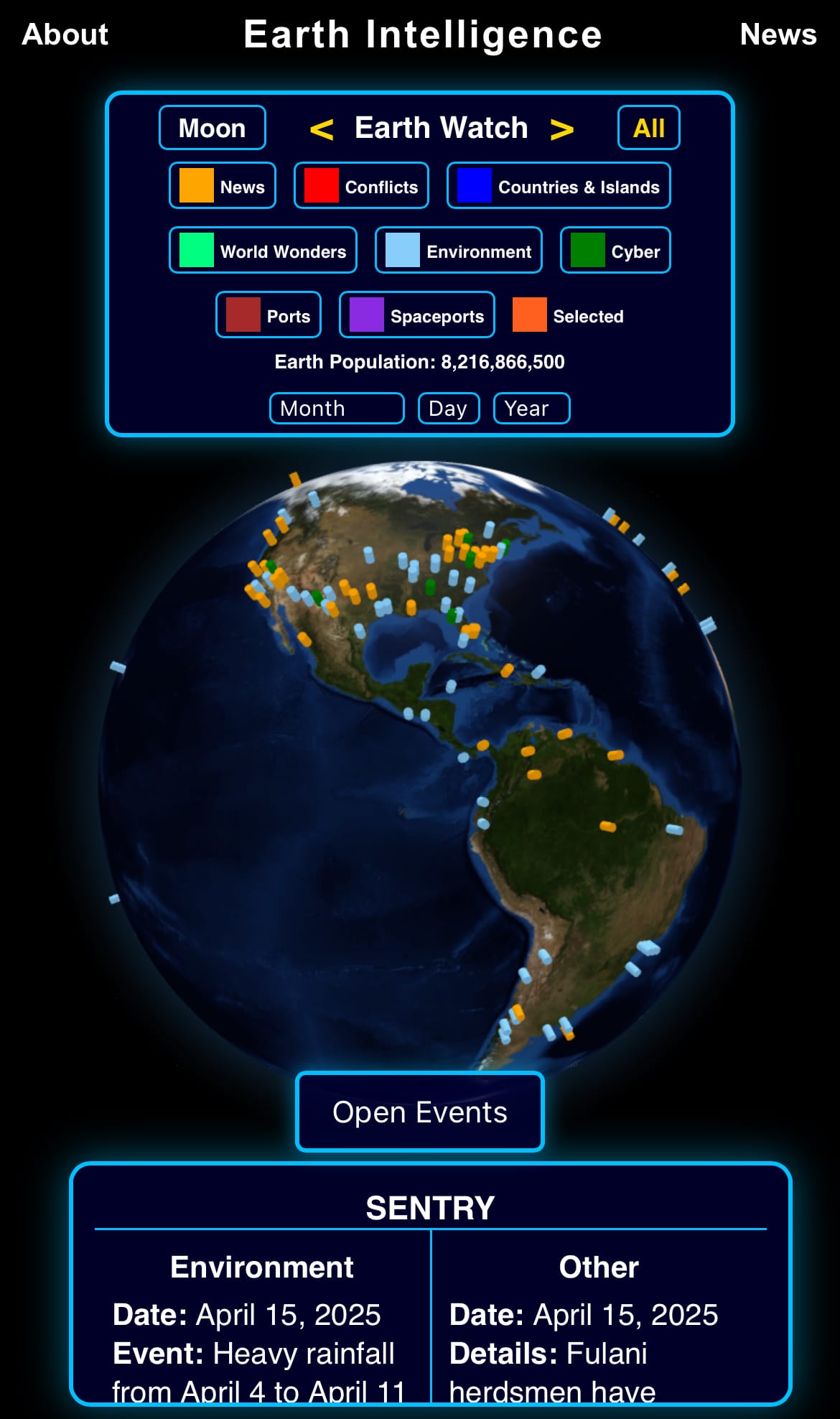


Support/Suggestions Email:
earthintelligence@earthintel.news




